I would actually use a different approach for this: simply make your threshold for turning on larger than your threshold for turning of. For example:

That way you don't need to deal with the timing of it and can still eliminate the jittery nature around your state transition. You can also tune this to account for how noisy your sensors are.
Edit:
Below I've mocked up the piece of your system you're asking about. It's probably way more than you were initially looking for, but I wanted to test make sure it all worked properly before I posted so you're welcome to use it in whole or in part. As for the timer you asked about, it's based on Hans Then's post from this thread. To trigger the alarm, you just call TriggerAlarm() on the PumpSystem class. It will log that an alarm was triggered and then check the two conditions you mentioned in your question (5 sec and 30 sec errors). Each element of self.alarms contains the number of alarms that happened in a particular second, and each second the timer triggers to remove the oldest second from the list and create a fresh one. If you run the program, you can trigger alarms by pressing spacebar and see how the list is updated. The MockUp class is just meant to test and demonstrate how this works. I imagine you'll remove it if you decide to plug some portion of this into what you're working on. Anyway, here's the code.
from threading import Timer, Thread, Event
class PumpSystem():
def __init__(self):
self.alarms = [0 for x in range(30)]
self.Start()
return None
def SetUpdateFlag(self, flag):
self.update_flag = flag
return True
def Start(self):
self.stop_flag = Event()
self.thread = ClockTimer(self.OnTimerExpired, self.stop_flag)
self.thread.start()
return True
def Stop(self):
self.stop_flag.set()
return True
def TriggerAlarmEvent(self):
self.alarms[-1] += 1
self.CheckConditions()
self.update_flag.set()
return True
def OnTimerExpired(self):
self.UpdateRunningAverage()
def CheckConditions(self):
# Check if another error has triggered in the past 5 seconds
if sum(self.alarms[-5:]) > 1:
print('5 second error')
# Check if more than 3 errors have triggered in the past 30 seconds
if sum(self.alarms) > 3:
print('30 second error')
return True
def UpdateRunningAverage(self):
self.alarms.append(0)
self.alarms.pop(0)
self.update_flag.set()
return True
class ClockTimer(Thread):
def __init__(self, callback, event):
Thread.__init__(self)
self.callback = callback
self.stopped = event
return None
def SetInterval(self, time_in_seconds):
self.delay_period = time_in_seconds
return True
def run(self):
while not self.stopped.wait(1.0):
self.callback()
return True
## START MOCKUP CODE ##
import tkinter as tk
class MockUp():
def __init__(self):
self.pump_system = PumpSystem()
self.update_flag = Event()
self.pump_system.SetUpdateFlag(self.update_flag)
self.StartSensor()
return None
def StartSensor(self):
self.root = tk.Tk()
self.root.protocol("WM_DELETE_WINDOW", self.Exit)
self.alarms = tk.StringVar()
w = tk.Label(self.root, textvariable=self.alarms, width=100, height=15)
self.alarms.set(self.pump_system.alarms)
w.pack()
self.root.after('idle', self.ManageUpdate)
self.root.bind_all('<Key>', self.ManageKeypress)
self.root.mainloop()
return True
def ManageUpdate(self):
if self.update_flag.isSet():
self.alarms.set(self.pump_system.alarms)
self.update_flag.clear()
self.root.after(1, self.ManageUpdate)
return True
def ManageKeypress(self, event):
if event.keysym == 'Escape':
self.Exit()
if event.keysym == 'space':
self.pump_system.TriggerAlarmEvent()
return True
def Exit(self):
self.pump_system.Stop()
self.root.destroy()
mockup = MockUp()
This may look like a lot, but half is the mockup class that you can probably just ignore. Let me know if there's anything that you're confused about and I'd be happy to explain what's happening.
